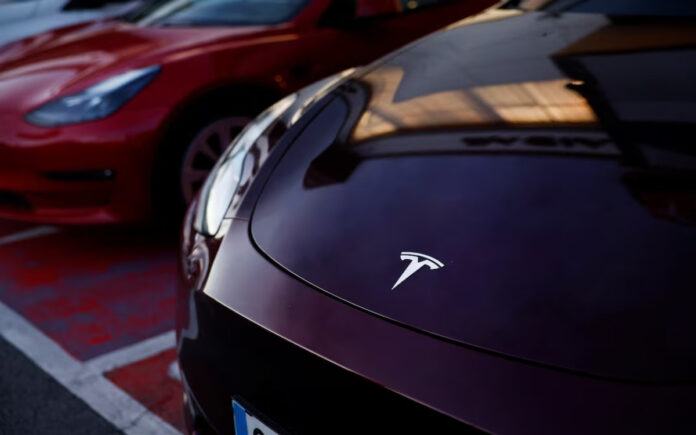New York: Tesla CEO Elon Musk announced on Tuesday that he will significantly reduce his involvement in the Trump administration’s Department of Government Efficiency (DOGE) beginning next month, in order to dedicate more attention to his various companies. The shift comes as Tesla battles declining sales and increasing investor concern over Musk’s divided focus.
Musk’s leadership in DOGE, where he has spearheaded controversial federal job cuts, has triggered widespread backlash, including protests and vandalism at Tesla showrooms. Investors have voiced frustration over Musk’s limited presence at Tesla, particularly as the automaker’s performance has faltered.
“The large slog of work necessary to get the DOGE team in place and working with the government to get the financial house in order is mostly done,” Musk told analysts during a conference call. He added, however, that he still intends to allocate approximately 40% of his time to the DOGE initiative.
Tesla reported better-than-expected profitability for its auto business in the first quarter but revenue fell short of expectations as sales of its electric vehicles dropped https://t.co/bJuVKwpBdI pic.twitter.com/W5RGgKcywC
— Reuters (@Reuters) April 23, 2025
Tesla’s stock, which had gained 4% in after-hours trading ahead of the earnings call, surged further to 5.5% following Musk’s comments. Despite the boost, Tesla shares remain nearly 50% below their December highs.
The automaker reported better-than-expected profit margins in its core auto business for the first quarter, driven by cost-cutting measures. It also reiterated plans to roll out an affordable electric vehicle by mid-2025. Still, Tesla warned it may revise its growth projections in the coming months due to uncertainties in global trade dynamics and shifting political sentiment, both of which could suppress demand.
Also Read: Sam Altman to Step Down as Chairman of Nuclear Startup Oklo, Eyes AI-Nuclear Collaboration
New tariff tensions are compounding Tesla’s challenges. In response to a U.S. tariff hike to 145% on certain Chinese imports, Tesla has suspended some China-sourced component shipments and paused new Model S and Model X orders in China. Musk reaffirmed his stance in favor of lower tariffs, but acknowledged the pressure on Tesla’s broader business: “Absent the macro issues, we don’t see any reduction in demand,” he said. He also warned that tariffs could significantly affect Tesla’s energy division.
Despite a strong margin performance, Tesla’s first-quarter automotive revenue fell by 20%, and net profits plummeted 71%, missing Wall Street expectations. Musk acknowledged criticism of his priorities but dismissed the notion that his political affiliations had significantly damaged Tesla’s sales.
Robotaxi and Product Outlook
Signs suggest Musk is refocusing on Tesla and his other ventures, including SpaceX, xAI, and Neuralink. Recent activity on his social platform X reflects renewed attention to corporate developments after months spent championing government reform.
“I think more attention by Musk on Tesla is a net positive for the stock, but to see a meaningful move in the stock we would need to see a headline more like ‘Musk to leave DOGE to refocus on Tesla,'” said Shawn Campbell, an investor with Camelthorn Investments.
Tesla reiterated its goal of launching a more affordable EV in the first half of 2025. “The ramp might be slower than we had hoped initially,” said Lars Moravy, Tesla’s VP of Engineering. “The models that come out in the next months will be built on our lines and will resemble in form and shape the cars we currently make. The key is they’ll be affordable and you’ll be able to buy one.”
Reuters recently reported that Tesla’s low-cost vehicle lineup may include a stripped-down U.S.-made version of the Model Y, with a slight delay expected in production rollout.
Meanwhile, Tesla confirmed that its robotaxi program in Austin, Texas remains on schedule for a June launch. Regulatory approvals are pending, and the initiative faces legal and safety concerns associated with deploying autonomous vehicles on public roads. Musk said he anticipates “millions of Teslas operating fully autonomously by the second half of next year.”
Tesla posted first-quarter revenue of $19.34 billion, falling short of the $21.11 billion analysts had forecast, according to LSEG data. Automotive gross margin excluding regulatory credits dropped to 12.5%, slightly beating analyst expectations.



